Economics
These economists say AI can improve the fiscal health of the U.S.
Published
5 months agoon

Can artificial intelligence be so transformative as to solve one of the U.S. economy’s biggest problems: its skyrocketing fiscal deficit? According to three economists at the Brookings Institution, the answer is yes — AI could prove a positive “critical shock” for the country’s fiscal health.
A working paper released last month by the Center on Regulation and Markets at Brookings projects that under the most optimistic scenario, AI could reduce the annual U.S. budget deficit by as much as 1.5% of gross domestic product by 2044, or about $900 billion in nominal terms, lowering annual budget deficits by roughly one fifth at the end of the 20-year span.
“The use of AI presents the rare — possibly unique — opportunity to expand access to health care information and services while simultaneously reducing the burden on the conventional health care system,” the paper’s authors, Ben Harris, Neil Mehotra and Eric So, wrote.
While the authors name various channels through which AI can increase productivity, they highlight AI’s potential to dramatically improve health care services and public health.
Not only could AI make American health care more efficient, it might also “democratize” access to the system by giving people more options for preventative medical care — “changing the ‘who’ and ‘where’ of health care,” the economists wrote.
AI could ease deficit pressure
The economic impacts of a more efficient health care system, and giving individuals more paths to manage their own health, could ease pressure on the government’s yawning fiscal deficit, which topped $1.8 trillion in the fiscal year ended Sept. 30. The national debt stands at $36 trillion.
But adopting AI in health care services isn’t a sure thing. Plenty of impediments stand in the way of widely implementing AI, largely tied to regulation and incentives.
Economists’ outlook on AI and health care is “a mix of enthusiasm and despair,” said Ajay Agrawal, a professor at the University of Toronto’s Rotman School of Management ,where he researches the economics of artificial intelligence.
“Enthusiasm because there’s probably no sector that stands to benefit more from AI than health care. … But there’s friction due to regulation, due to incentives — because of the way things are structured and how people are paid for things — and friction due to the associated risks and liabilities,” Agrawal said.
“So yes, there’s lots of implementation challenges, and at the same time, the prize for succeeding at this is very big,” Agrawal said.
Health care and the deficit
The federal government spent an estimated $1.8 trillion on health insurance in 2023, or around 7% of GDP, according to the Congressional Budget Office. From 2024 to 2033, the CBO forecasts federal subsidies for health care will total $25 trillion, or 8.3% of GDP.
The problem is that so much health care spending in the U.S. isn’t tied to treatment or patient outcomes. Instead, about a quarter of all spending, public and private, is estimated to go toward administrative functions.
“Nearly every industry in the U.S. has experienced substantial improvements in productivity over the last 50 years, with 1 major exception: health care,” according to a report by McKinsey analysts.
This is one area where AI could improve operations, according to the Brookings Institution economists. Basic tasks such as appointment scheduling can be automated, while tasks such as patient flow management and preliminary data analysis can also be done by AI programs.
While the three economists acknowledge that the impact of AI on federal spending is still “highly uncertain,” the coauthors believe it could ultimately be more transformative for the economy than past technological leaps, such as the use of personal computers in the 1990s. The current AI shock “feels different. This isn’t your typical technological shock,” Harris told CNBC.
AI is affecting “how people receive health care,” how the drug industry discovers new products and how researchers make medicine more precise, Harris said.
Disease and death rates
In particular, Harris underscored AI’s impact not just on productivity, but also its potential to transform the cost of care and the rates of illness, disease and death.
“Such changes could have profound impacts on Social Security and public health program outlays,” he and his coauthors wrote.
To be sure, there is also the potential that AI advancements could counterintuitively increase federal spending if the average lifespan increases as a result of the technology. Not only could improved technology lead people to seek more medical care, longer lifespans might also result in a larger retired population.
But the Brookings paper takes a more optimistic tack, predicting one of AI’s largest benefits will result from accelerating the efficacy of preventative care and disease detection. This will create a healthier population that will need less medical intervention, the authors wrote — and might also increase labor force participation rates if a healthier workforce stays employed for more years.
“AI’s ability to improve diagnostic accuracy can not only improve patient outcomes but also reduce wasteful spending on inappropriate treatments,” the economists said. “From a more optimistic perspective, existing AI systems may lower expenditures on all health spending, including Medicare, with cost reductions occurring through several channels—with personalized medicine being a prominent example.”
Evaluating whether AI can ultimately translate into a positive or negative shock on fiscal policy will depend on what stage of the age distribution it affects, Agrawal said. Whether AI is “having its bigger impact on retired people, or around working people,” will answer how the numbers play out, Agrawal said.
AI proliferating already
So far, diagnostics has shown the most advances and greatest potential in applying AI in health care. Agrawal cited AI’s influence throughout almost all the steps of diagnostic care, from receiving input data, medical imagery such as X-rays and MRIs, as well as doctor notes, charts.
“In almost every area of diagnosis, AI has, in some cases, already demonstrated what they call ‘superhuman performance’ — better than than most docs,” Agrawal said.
AI has also shown “significant promise” in better optimizing treatment plans for patients through data analysis. Machine intelligence can develop more effective and less costly plans for individual patients, according to the authors of the paper.
Agrawal believes it’s too early to say whether public or private health systems will take better advantage of AI. In the U.S., private insurers have generally been more keen on AI technology associated with preventative treatment, he said. There’s been less interest in using AI in diagnostic applications, possibly that might lead to a rise in cases and more treatment, he said.
“There aren’t clear economic incentives for the private sector to [implement] that,” said Agrawal. “In the public sector, even though there are incentives, there are a lot of frictions associated with privacy on the data side.”
He believes public-private partnerships will be key in driving the rollout of AI across health care.
The public health care sector “will need very strong incentives in order to drive change, because otherwise, everybody is in their routine. There’s a lot of resistance to change,” Agrawal said.
“So to get over that resistance, you need a very strong motivator, and the private sector generally provides a much stronger motivator, either because the users are trying to reduce cost, or the creators of the technology are trying to generate profit,” he continued.
Large tech companies have already pushed forward in developing large language models specifically for health care services. Google’s AI system, Articulate Medical Intelligence Explore (AMIE), mimics diagnostic dialogue. Its Med-Gemini platform uses AI to aid in diagnosis, treatment planning and clinical decision support. Amazon and Microsoft have their own projects underway to expand the application of AI programs in health services.
Outlook under Trump
President-elect Donald Trump’s second term could alter the rollout of AI in health care, and ultimately, its economic impact. Trump has vowed to reduce government spending and formed an outside panel called the Department of Government Efficiency designed to “dismantle Government Bureaucracy, slash excess regulations, cut wasteful expenditures, and restructure Federal Agencies.” Public health funding is one area that could reduced funding, frustrating the ability to roll out AI applications.
“Now, it is possible that if you do see a retreat in the federal government’s role in providing health care to people, that more efficient AI could help compensate for the cost of that retreat,” said Harris. “If AI means that each dollar goes farther, then I think we’ve timed everything in a sort of lucky way.”
There’s also the chance that rolling back regulations under a second Trump administration could expedite the implementation of AI across health care.
“Many people are fearful of reducing regulation because they don’t want technologies that are immature to be brought into the health care system and harm people,” Agrawal said. “And that’s a very legitimate concern. But very often what they fail to also put into their equation is the harm we’re causing people by not bringing” in new technologies, he added.
“Some areas need a lot more technical development, but there are some domains in diagnosis that are already ready to go, and it’s just regulation that’s preventing them from being used,” Agrawal said.
You may like
-


Americans are getting flashbacks to 2008 as tariffs stoke recession fears
-


ECB members say inflation job nearly done but tariff risks loom
-
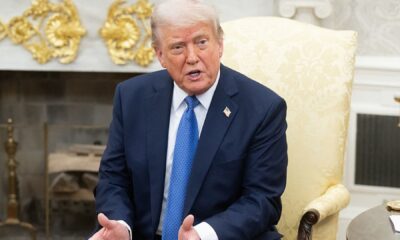

Trump insists bond market tumult didn’t influence tariff pause: ‘I wasn’t worried’
-
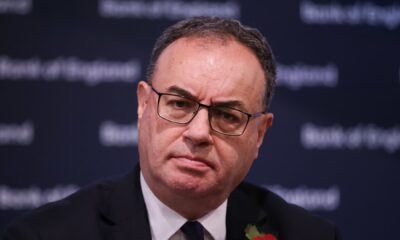

Bank of England chief focused on tariff ‘growth shock’
-


Orders for big-ticket items like autos and appliances surged 9.2% in March in rush to beat tariffs
-
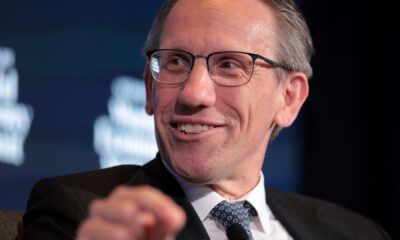

German finance minister prefers zero for zero tariff solution
Economics
Americans are getting flashbacks to 2008 as tariffs stoke recession fears
Published
1 hour agoon
April 26, 2025
Homemade barbecue pork chops. Katy Perry performs onstage during the Katy Perry The Lifetimes Tour 2025. A woman checks her receipt while exiting a store.
iStock| Theo Wargo | Hispanolistic | Getty Images
A few weeks ago, as Kiki Rough felt increasingly concerned about the state of the economy, she began thinking about previous periods of financial hardship.
Rough thought about the skills she learned about making groceries stretch during the tough times that accompanied past economic downturns. Facing similar feelings of uncertainty about the country’s financial future, she began making video guides to recipes from cookbooks published during previous recessions, depressions and wartimes.
The 28-year-old told followers that she is not a professional chef, but instead earned her stripes by learning to cook while on food stamps. From Rough’s yellow-and-black kitchen in the Chicago suburbs, she teaches viewers how to make cheap meals and at-home replacements for items like breakfast strudel or donuts. She often reminds people to replace ingredients with alternatives they already have in the pantry.
“I keep seeing this joke over and over in the comments: The old poors teaching the new poors,” Rough told CNBC. “We just need to share knowledge right now because everyone is scared, and learning is going to give people the security to navigate these situations.”
The self-employed consultant’s videos quickly found an audience on TikTok and Instagram. Between both platforms, she’s gained 350,000 followers and garnered about 21 million views on videos over the last month, by her count.
President Donald Trump’s announcement of broad and steep tariffs earlier in April has ratcheted up fears of the U.S. economy tipping into a recession in recent weeks. As Americans like Rough grow increasingly worried about the road ahead, they are harking back to the tips and tricks they employed to scrape by during dark financial chapters like the global financial crisis that exploded in 2008.
Google is predicting a spike in search volumes this month for terms related to the recession that came to define the late 2000s. Searches for the “Global Financial Crisis” are expected to hit levels not seen since 2010, while inquiries for the “Great Recession” are slated to be at their highest rate since the onset of the Covid pandemic.
Porkchops, house parties and jungle juice
On TikTok, a gaggle of Millennials and Gen Xers has stepped into the roles of older siblings, offering flashbacks and advice to younger people on how to pinch pennies. Some Gen Zers have put out calls to elders for insights on what a recession may feel like at this stage of life, having been too young to feel the full effects of the financial crisis.
“This is, potentially, at least on a large scale, the first time that millennials have been able to be the ‘experts’ on something,” said Scott Sills, a 33-year-old marketer in Louisiana. “We’re the experts on getting the rug pulled out from under us.”
Those doling out the advice are taking a trip down memory lane the to tail-end of the aughts. Cheap getaways to Florida were the norm instead of lush trips abroad. They had folders for receipts in case big-ticket purchases went on sale later. Business casual outfits were commonplace at social events because they couldn’t afford multiple styles of clothing.
Porkchops were a staple dinner given their relative affordability, leading one creator to declare that they “taste like” the Great Recession. They drank “jungle juice” at house parties, a concoction of various cheap liquors and mixers, instead of cocktails at bars.
“There’s things that I didn’t realize were ‘recession indicators’ the first time around that I thought were just the trends,” said M.A. Lakewood, a writer and professional fundraiser in upstate New York. “Now, you can see it coming from 10 miles away.”
Customers shop for produce at an H-E-B grocery store on Feb. 12, 2025 in Austin, Texas.
Brandon Bell | Getty Images
To be sure, some of the discourse has centered around how inflationary pressures have made a handful of these hacks defunct. Some content creators pointed out that the federal minimum wage has sat at $7.25 per hour since 2009 despite the cost of living skyrocketing.
Kimberly Casamento recently began a TikTok series walking viewers through recipes from a cookbook that was focused on affordable meals published in 2009. The New Jersey-based digital media manager said she’s found costs for what were then considered low-budget meals ballooning between about 100% and 150%. In addition to sharing the price changes, the 33-year-old gives viewers some tips on how to keep costs down.
“Every aspect of life is so expensive that it’s hard for anybody to survive,” Casamento said. “If you can cut the cost of your meal by $5, then that’s a win.”
‘A very human thing’
This type of communal knowledge-sharing is common during times of economic belt tightening, according to Megan Way, an associate professor at Babson College who studies family and intergenerational economics. While conversations about how to slash costs or to make meals stretch typically took place among neighbors in the late 2000s, Way said it makes sense that they would now play out in the digital square with the rise of social media.
“It’s a very human thing to reach out to others when things are feeling uncertain and try to gain on their experience,” Way said. “It can really make a difference for feeling like you’re moving forward a little prepared. One of the worst things for an economy is absolute fear.”
Read more CNBC analysis on culture and the economy
Way said that Americans are quick to look back to the Great Recession for a guide because that downturn was so shocking and widely felt. However, she said there’s key differences between that economic situation and what the U.S. is facing today, such as the absence of bad debt that sparked the housing market’s crash.
Still, she said there’s broad uncertainty felt today on several fronts — be it tied to the economy, geopolitics or domestic policy priorities like slashing the federal workforce or limiting immigration. That can reignite the feeling of unpredictability about what the future will bring that was paramount during the Great Recession, Way said.
In 2025, it’s clear that economic confidence among the average American is rapidly souring. The University of Michigan’s index of consumer sentiment recorded one of its worst readings in more than seven decades this month.
With that negative economic outlook comes rising stress. When Lukas Battle made a satirical TikTok about feeling like divorces were increasingly common around the time of the Great Recession, the 27-year-old’s comments were abuzz with people talking about their parents splitting recently. (Though divorce has been seen as a cultural hallmark of the financial crisis, data shows the rate actually declined during this period.)
“There’s a second round of divorces happening as we speak,” Battle said.
Cultural parallels
That’s one of several parallels social media users have drawn between the late aughts and today. When videos surfaced of a group dancing to Doechii’s hit song “Anxiety,” several commenters on X reported feeling déjà vu to when flashmob performances were common.
Disney‘s reboot of the animated show “Phineas and Ferb,” which originally premiered in the late 2000s, similarly put the era top of mind.
Lady Gaga performing at Coachella 2017
Getty Images | Christopher Polk
“Recession pop,” a phrase mainly referring to the subgenre of trendy music that dropped during the Global Financial Crisis, has caught a second wave over the past year as Americans contended with inflation and high interest rates.
Now, in 2025, as the chorus of voices projecting a recession ahead grows, pop music has some familiar sounds.
In 2008, artists such as Miley Cyrus, Lady Gaga and Katy Perry regularly appeared on the music charts. Both Cyrus and Gaga have released new songs this year. Perry kicked off a world tour this week.
“It’s almost a permission to feel good, whether that’s through song or something,” said Sills, the marketer in Louisiana. “It’s not necessarily ignoring the problems that are here, but just maybe finding some sort of joy or fun in the midst of all of it.”
Economics
Checks and Balance newsletter: Predictions for the Democrats’ future
Published
2 hours agoon
April 26, 2025
Checks and Balance newsletter: Predictions for the Democrats’ future
Economics
ECB members say inflation job nearly done but tariff risks loom
Published
1 day agoon
April 25, 2025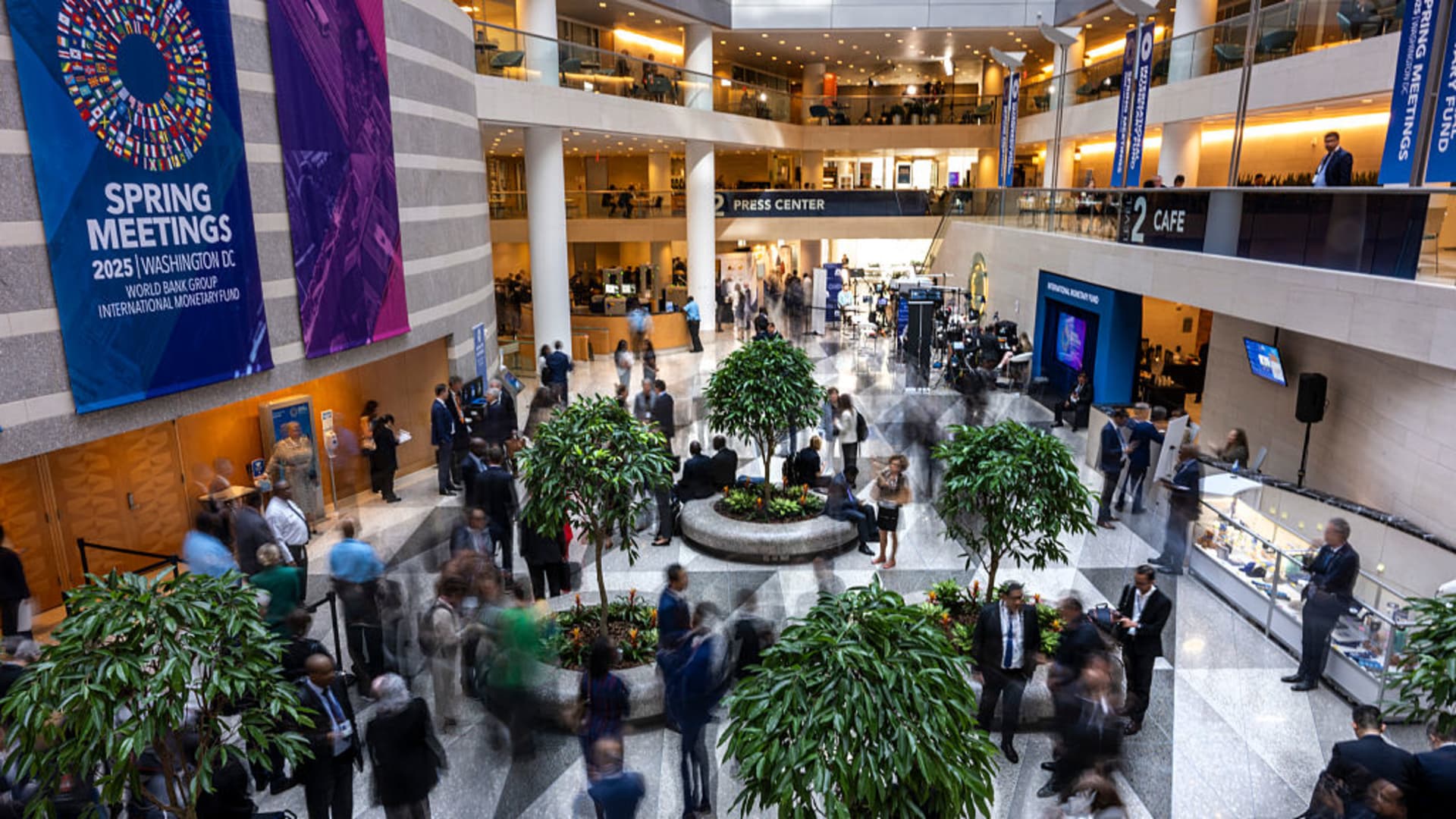
Guests and attendeess mingle and walk through the atrium during the IMF/World Bank Group Spring Meetings at the IMF headquarters in Washington, DC, on April 24, 2025.
Jim Watson | Afp | Getty Images
After years dominated by the pandemic, supply chains, energy and inflation, there was a new topic topping the agenda at the World Bank and International Monetary Fund’s Spring Meetings this year: tariffs.
The IMF set the tone by kicking off the week with the release of its latest economic forecasts, which cut growth outlooks for the U.S., U.K. and many Asian countries. While economists, central bankers and politicians have been engaged in panels and behind-the-scenes talks, many are attempting to work out whether trade tensions between China and the U.S. are — or perhaps are not — cooling.
Policymakers from the European Central Bank that CNBC spoke to this week broadly stuck a dovish-leaning tone, indicating they saw interest rates continuing to fall and few upside risks to euro zone inflation. However, all stressed the current high levels of uncertainty, the need to keep monitoring data, and the high risks to the growth outlook — sentiments also echoed by Bank of England Governor Andrew Bailey in his interview with CNBC on Thursday.
These were some of the main messages from ECB members this week.
Christine Lagarde, European Central Bank president
On inflation and monetary policy:
“We’re heading towards our [inflation] target in the course of 2025, so that disinflationary process is so much on track that we are nearing completion. But we have the shocks, you know, and the shocks will be a dampen on GDP. It’s a negative shock to demand.”
“The net impact on inflation will depend on what countermeasures are eventually taken by Europe. Then we have to take into account the [German] fiscal push by the defense investments, by the infrastructure fund.”
“We have seen successive movements, you know, announcement [of U.S. tariffs], and then a pause, and then some exemptions. So we have to be very attentive… Either we cut, either we pause, but we will be data dependent to the extreme.”

On market moves:
“When we had done our projections, we anticipated that… the dollar would appreciate, the euro would depreciate. It’s not what we saw. And there have been some counter-intuitive movements in various categories.”
“The German market has obviously been shocked in a positive way by the program soon to be put in place by the German government, with a commitment to defense, with a commitment to a big fund for infrastructure development.”
Klaas Knot, The Netherlands Bank president
On tariff uncertainty:
“If I look back over the last 14 years, in the initial days of the pandemic I think that was comparable uncertainty to what we have now.”
“In the short run, it’s crystal clear that the uncertainty that is created by the unpredictability of the tariff actions by the U.S. government works as a strong negative factor for growth. Basically, uncertainty is like a tax without revenue.”
On the inflation impact:
“In the short run, we will have lower growth. We will probably also have lower inflation. As we also see, the euro is appreciating as energy prices have also come down. So together with the sort of negative factor uncertainty in the short run, it’s crystal clear that it will accelerate the disinflation.”

“But in the medium term, the inflation outlook is not all that clear. I think there are still these negative factors. But in the medium term, you might get retaliation. You might get the disruption of global value chains, which might also be inflationary in other parts of the world than the U.S. only. And then, of course, we have the fiscal policy coming in in Europe. So this is actually a time in which you need projections.”
On a June rate cut and market pricing for two more ECB rate cuts in 2025:
“I’m fully open minded. I think it’s way too early to already take a position on June, whether it would be another cut. It will fully depend on these projections.”
“I would need to see a more structured analysis of the impact on the inflation profile ahead of us, and only then can I say whether the market is pricing fair or whether I don’t.”
Robert Holzmann, Austrian National Bank governor
On the need to wait for more data and news on tariffs:
“We have not seen this uncertainty now for years… unless the uncertainty subsides, by the right decisions, we will have to hold back a number of our decisions, and hence, we don’t know yet in what direction monetary policy should be best moved.”
“Before looking at data in detail, the question is, what kind of political decisions will be taken? Is it that we will have some tariff increases? Is it that we will have strong tariff increases? Is it that we will have retribution by high counter tariffs?”

On the ECB’s April rate cut:
“I think there’s a broad consensus [on rates]. But of course, at the margin, people differ.”
“My assessment is that at this time, it wasn’t clear yet to what extent [tariff] countermeasures were being taken. Because with countermeasures in Europe, prices may have increased. Without countermeasures, quite likely the price pressure is downward. And for the time being, we don’t know yet the direction.”
On the direction of interest rates:
“I think if the recent noises about an arrangement [on trade] were to be true, in this case, quite likely it is more towards the downside than the upside with regard to prices. But this can be changed with different decisions and the result of which, we may even imagine in [the] other direction. For the time being, no, it will be down.”
“There may be further cuts this year, but the number is still outstanding.”
Mārtiņš Kazāks, Bank of Latvia governor
On opportunity from tariffs:
“With all this uncertainty and vulnerability, this is also the time of opportunities for Europe.”
“It’s a time for Europe to grasp all the aspects of being an economic superpower and becoming a really fully-fledged political and geopolitical superpower, and this requires doing all the decisions that in the past, were not carried out fully.”
“This requires political will, political guts to make those decisions, and to strengthen the European economy and assert its place in a global world.”

On market reaction to tariffs:
“So far it seems to be relatively orderly … but if one looks at the spillovers to Europe, the financial markets are working more or less fine, we haven’t seen spreads exploding or anything like that.”
“But in terms, however, of the macro scenarios, this uncertainty is extremely elevated in the sense that, given the possible outcomes, the multiple scenarios and their probabilities are very similar with the baseline [tariff] scenario.”

What student loan forgiveness opportunities still remain under Trump

Americans are getting flashbacks to 2008 as tariffs stoke recession fears

Checks and Balance newsletter: Predictions for the Democrats’ future

New 2023 K-1 instructions stir the CAMT pot for partnerships and corporations

The Essential Practice of Bank and Credit Card Statement Reconciliation

Are American progressives making themselves sad?
Trending
-
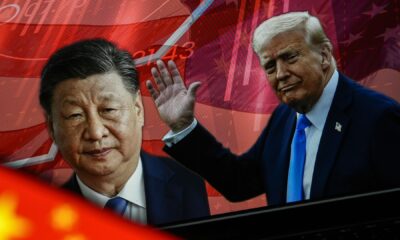
 Economics1 week ago
Economics1 week agoChina targets U.S. services and other areas after decrying ‘meaningless’ tariff hikes on goods
-
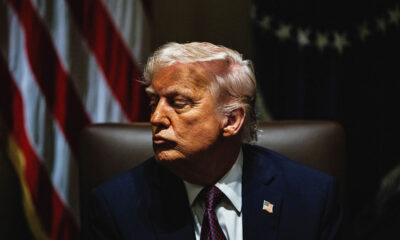
 Economics1 week ago
Economics1 week agoDonald Trump’s approval rating is dropping
-

 Personal Finance1 week ago
Personal Finance1 week agoHere’s why retirees shouldn’t fully ditch stocks
-

 Blog Post7 days ago
Blog Post7 days agoDocumenting Bookkeeping Processes and Procedures
-

 Personal Finance1 week ago
Personal Finance1 week agoIRS’ free tax filing program is at risk amid Trump scrutiny
-
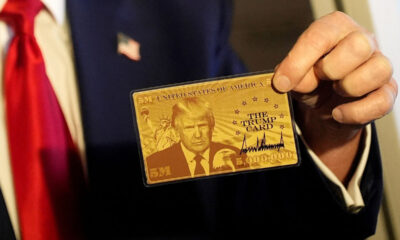
 Economics6 days ago
Economics6 days agoDonald Trump wants a certain kind of immigrant: the uber-rich
-

 Economics7 days ago
Economics7 days agoTrump’s approval rating on economy at lowest of presidential career
-

 Economics1 week ago
Economics1 week ago‘He should bring them down’
